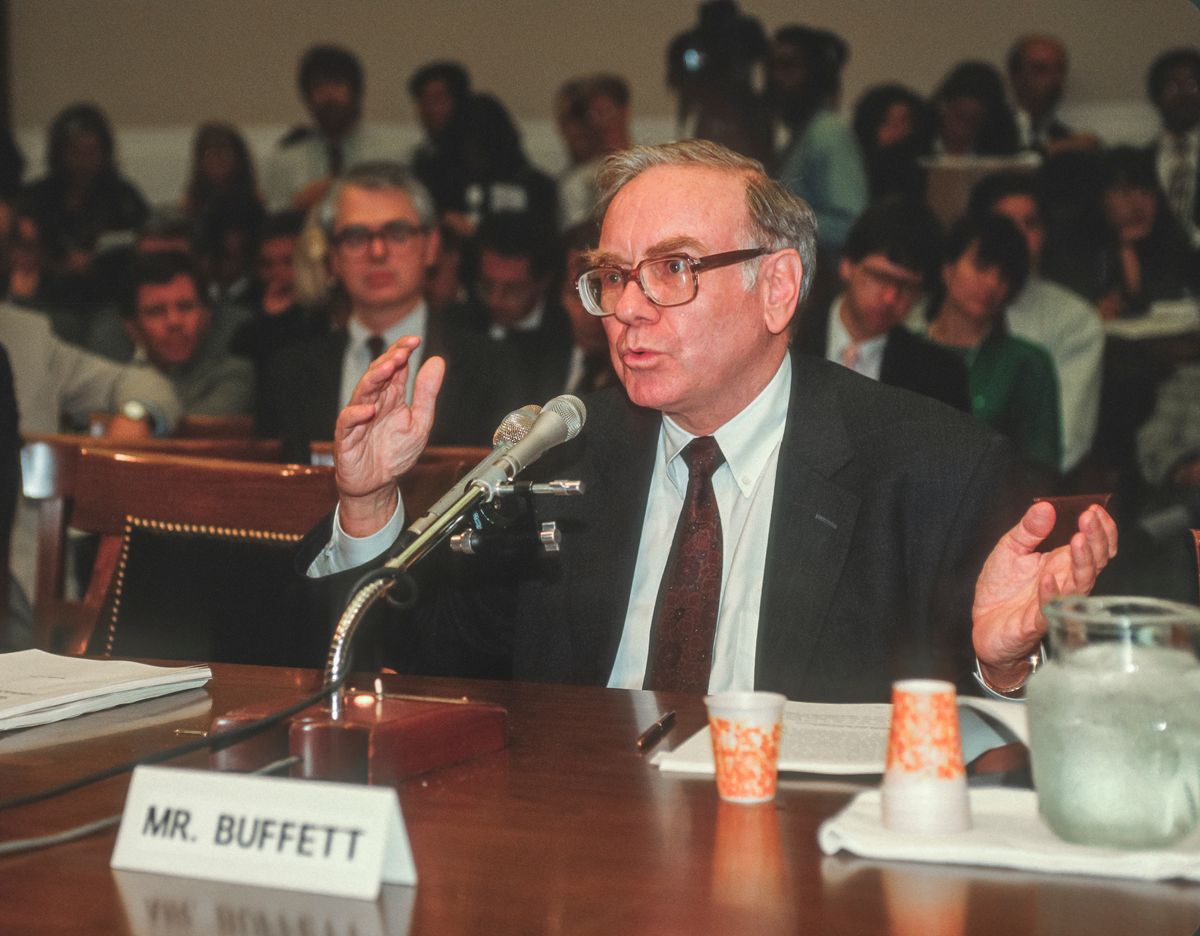This week’s vintage spotlight is on a member of the iconic Rolex Day-Date collection – specifically, a reference 1803 that has been photographed on a Gibson Les Paul guitar. A classic watch with a classic guitar, these two are quite the pair, aren’t they? But hey, eyes back here on the dial! Let’s take a close look at this unique, early example of this world-famous watch and discover more about the Rolex Day-Date 1803.
The History of the Rolex Day-Date Collection
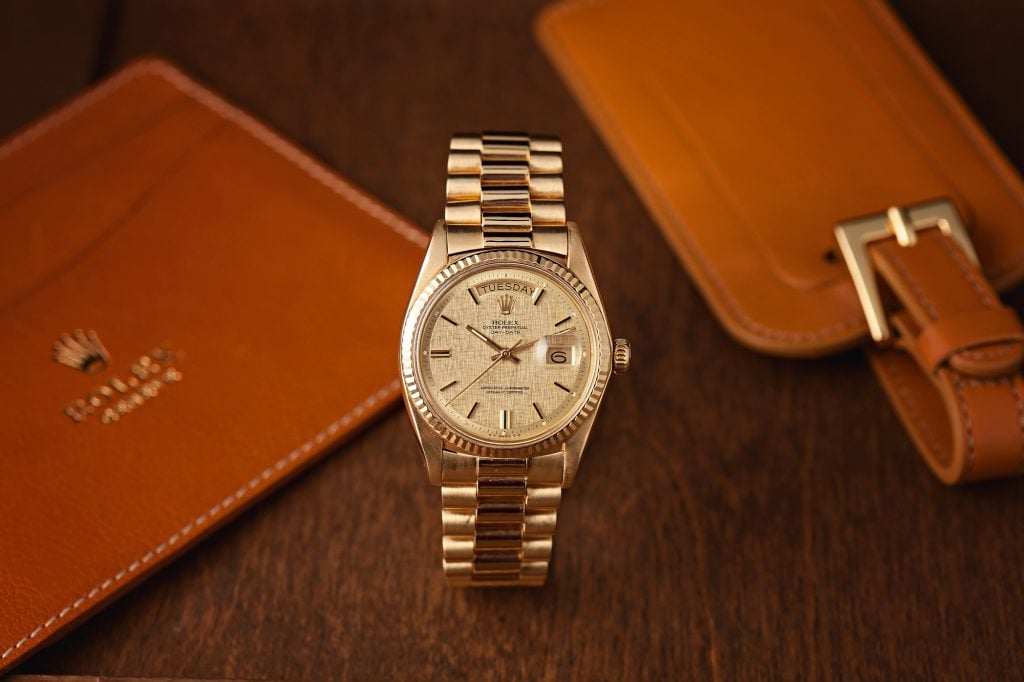
The Rolex Day-Date’s legacy began in 1956, with the first references being produced within the series being the 6510 and 6511. Both of these initial models featured the now-iconic President bracelet, a fluted bezel, and a 36mm Oyster case. These references were the first watches in the world to display both the date of the month and the day of the week, with the day spelled out fully through a window on the dial. These initial models also sported Rolex’s patented waterproof Oyster case, exclusively forged out of either gold or platinum, along with a self-winding Perpetual movement.
Ultimately, Rolex would discontinue ref. 1803 in the late 1970s, ushering in many new design elements, such as sapphire crystal and a flatter dial. The first generation set the wheels in motion not only for the iconic ref. 1803, but the rest of the entire Day-Date collection, which would go on to include a wide range of dial colors, new precious metals, updated movements, and even new bracelets.
Rolex Day-Date Timeline
- 1956: Introduction of the Rolex Day-Date collection
- 1958: 180x Series – cal. 1555, later cal. 1556
- 1977: 180xx Series – cal. 3055
- 1977: OysterQuartz Series – cal. 5055, later cal. 5355
- 1988: 182xx Series – cal. 3155
- 2000: 118xxx Series – cal. 3155
- 2008: Day-Date II with 41mm case – cal. 3156
- 2015: Day-Date 40 – cal. 3255
- 2019: 1282xx Series – cal. 3255
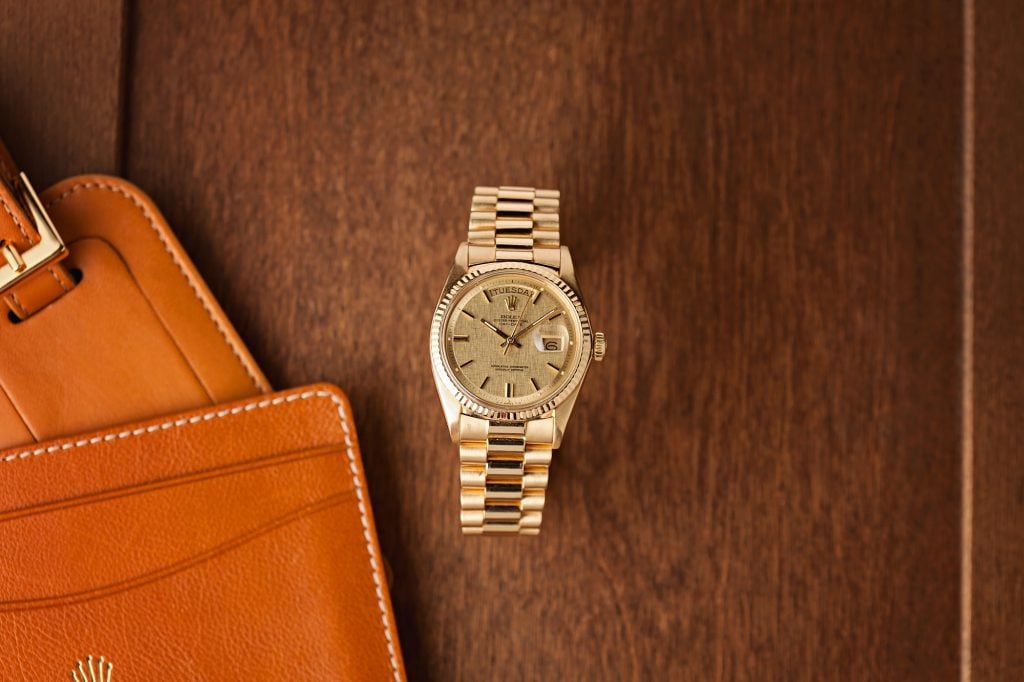
About the Rolex Day-Date 1803
First released in 1956, the Rolex Day-Date was the first wristwatch in the world to display the date and the day of the week spelled out in-full in a window on the dial. And just a few years later, Rolex would introduce us to the ref. 1803, one of the very earliest Rolex Day-Date watches ever released. While the Day-Date – also known as the “President” for its ties to world leaders – would continue to be produced until today, there are a slew of unique features of the ref. 1803 that set it apart.
One of the most notable characteristics of these now used Rolex watches is the acrylic crystal that was fitted to the ref. 1803, as all subsequent generations of the Day-Date featured sapphire crystals and today, Rolex exclusively uses synthetic sapphire for its watches. Look closely and you’ll also notice that one of the other unique features is the “pie pan” dials of the Day-Date 1803 – a unique dial shape with a distinctly vintage flare, where the outer edge angles downwards, giving the dial the shape of an inverted pie pan. The Rolex Day-Date ref. 1803 was the last model to boast this dial, but do note that the two previous models from the 1950s also featured pie-pan dials.
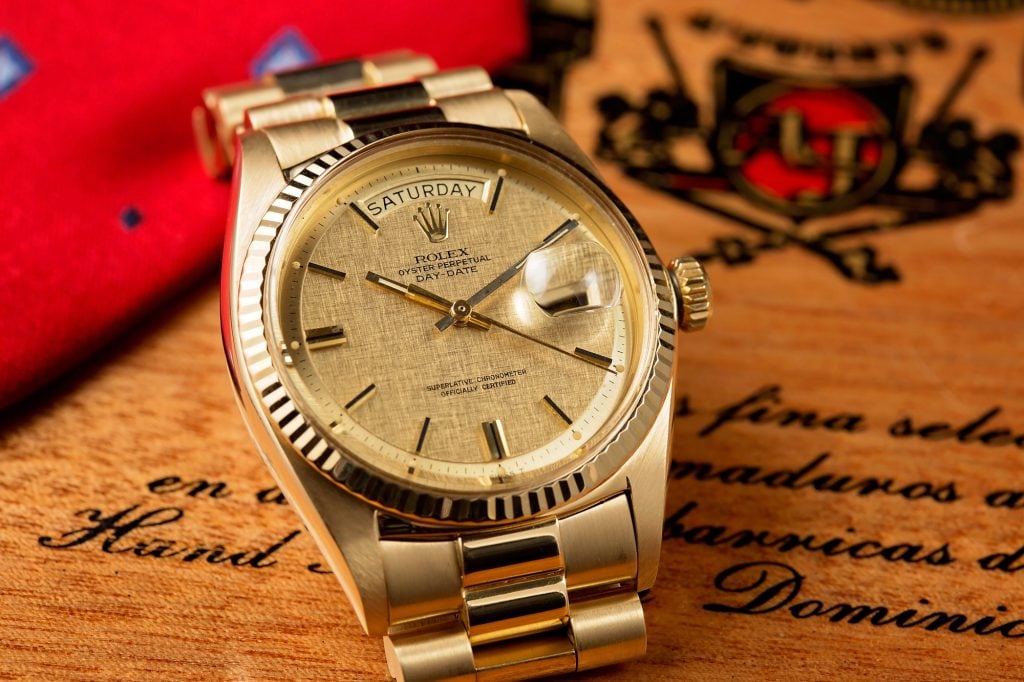
Acrylic vs. Sapphire Crystals
Side-by-side, the difference between acrylic and sapphire is noticeable. Acrylic is taller and boxier than sapphire and exudes a certain vintage charm not afforded to its successor. On the other hand, sapphire is flatter, transitions into the bezel more seamlessly than acrylic, and appears more contemporary overall.
Sapphire is tougher, too, boasting the distinction “scratch resistant,” which means that the wearer doesn’t have to worry about scratching the crystal as they go about their day when the watch is furnished with sapphire. On the other hand, it’s relatively easy to buff out scratches on acrylic. Also, sapphire is much harder than acrylic and is more prone to shattering.
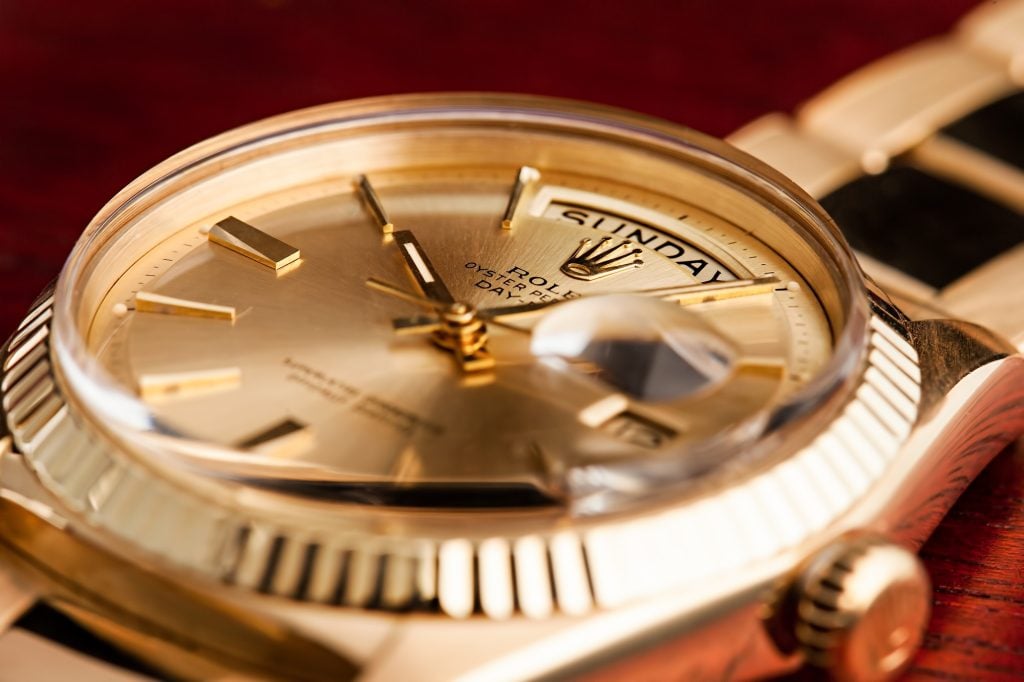
Rolex 1803 Bracelets and Movements
Clocking in at 36mm, the ref. 1803 has the same case diameter as the modern Day-Date watches that are produced today. But looking at this specific reference here, you’ll notice something quite important is missing from this iconic watch. The famous three-link ‘President’ bracelet (which is where the watch gets its nickname) is not present, and in its place is a traditional rivet-style Oyster bracelet in 18k yellow gold.
The 18k gold Oyster bracelets and President bracelets fitted to Rolex Day-Date 1803 watches all feature hollow links, unlike the modern versions that are completely solid. It wasn’t until much later that Rolex would update the model to feature a solid bracelet, and this drastically changed both the weight and the way the watch feels on your wrist. This is actually a great way to tell if you’re slipping on a vintage Rolex, as it will often have a noticeably lighter bracelet design.
The President bracelet features three-piece links in a semi-circular shape, setting it apart from the flat-link Oyster bracelet offered throughout the rest of the Rolex portfolio. The Crownclasp is concealed in the links, distinguishable only by a tiny Rolex coronet – hence the name “Crownclasp.” It’s also worth noting that the President bracelet is exclusive to the Day-Date and various editions of the Lady-Datejust. You won’t find an Oyster Perpetual direct from the Rolex factory sporting the unique President bracelet. Additionally, just like the Day-Date collection, the President bracelet is only ever produced in precious metal. If you see a Rolex paired with this bracelet type, you can be sure it’s either gold or platinum.
Ticking inside the reference 1803 is the caliber 1555 movement with a free-sprung Micro-Stella balance, which would later be updated to the higher-frequency Caliber 1556 in the mid 1960s. To compare, caliber 1555 has a frequency of 18,000 bph, while caliber 1556 operates at 19,800 bph, making it more resistant to shocks. The newer movement also boasts one extra jewel – 26 jewels, to be exact, not counting the calendar wheel. With that in mind, neither movement fitted to the Rolex Day-Date 1803 includes a quickset feature for either the date or the day, meaning that they cannot be set independently from the time, and the hands must be advanced past midnight in order to change the calendar displays.
Reference 1803’s predecessors relied on outsourced movements. However, by the time ref. 1803 hit the market, Rolex had produced a variation of the 1500 series movements just for the Day-Date, complete with the day function. With the new movement came a slightly more thinned-out profile than the inaugural Day-Date references.
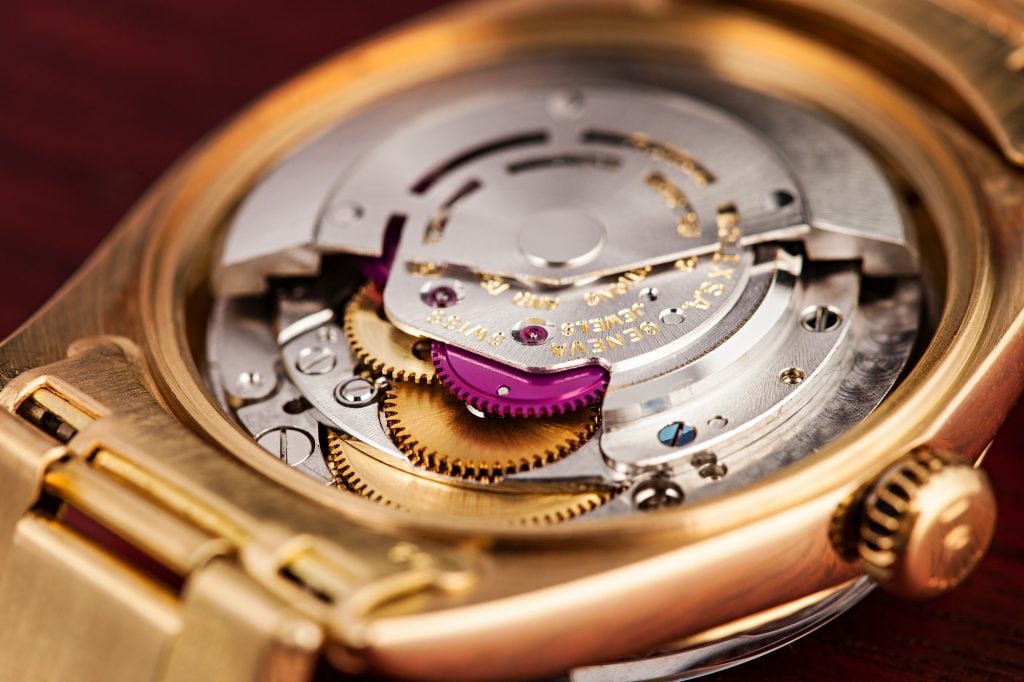
Laying the Groundwork for Future Models
After the introduction of the ref. 1803, some technological changes were made over the next few years, including the addition of the “hack” feature around 1972. The hack feature allowed the seconds hand to be stopped when the crown is pulled out to set the time. The later “quickset” feature on Day-Date Models, introduced with caliber 3055 on the subsequent generation of the Day-Date in the late 1970s, allowed the wearer to simply pull the crown out halfway and change the date display without also adjusting the time. The “double quickset” feature introduced alongside the 182XX series in the 1980s includes the day display, allowing the wearer to set both apertures with a simple twist of the crown instead of advancing the hour hand past midnight for both the day and the date.
The inclusion of sapphire crystal was another great advance for the Day-Date that came with the generation that followed, making the reference 1803 the last Rolex Day-Date model to feature a vintage acrylic crystal. The updated sapphire crystal added to the durability of the watch and offers significantly greater scratch-resistance, but its flat glossy surface creates a much more modern overall aesthetic.
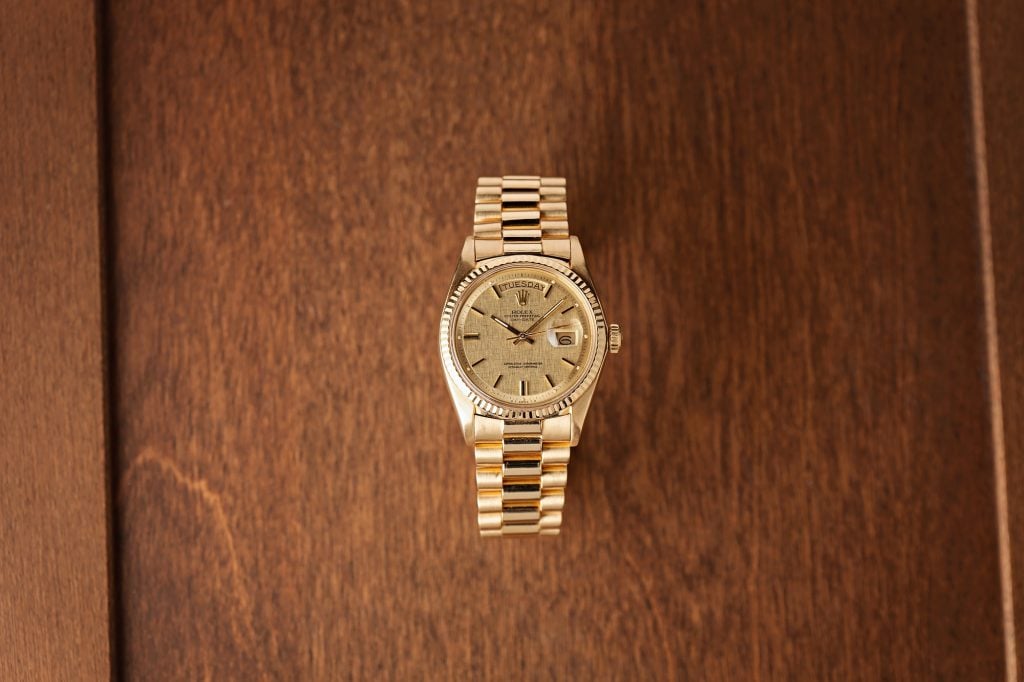
How The Day-Date Got Its Nickname “President”
Many former US Presidents were known to wear the Day-Date, including Ronald Reagan, Richard Nixon, Bill Clinton, and John F. Kennedy – although his association with the watch was much more scandalous than the rest. It’s rumored that Marilyn Monroe gifted JFK his gold Day-Date and that he never even wore the timepiece because of the implications that it would have had. However, Lyndon B. Johnson, president from 1963 until 1969, was rumored to have led to the Day-Date acquiring its prestigious nickname, the “President.”
Johnson was the first President to wear the Day-Date while in office, which later inspired Rolex to release an ad referring to the Day-Date as the “President’s Watch,” stating that it was the watch seen “on the wrists of Presidents everywhere.” It is believed that the nickname originally referred to only the bracelet but has since become the nickname of both the bracelet and the Day-Date model.
Lyndon B. Johnson is not to be confused with Dwight D. Eisenhower as the inspiration for the “President” moniker. Rumors circulated that Rolex gifted him a Day-Date while he was still a General in the Army. However, the watch Rolex gave Eisenhower was actually a gold Datejust ref. 6305 on a Jubilee bracelet and that he received his watch in the early 1950s, several years before the Day-Date hit the market in 1956.
It’s also worth noting that Eisenhower wouldn’t become President until 1953, a few years after he was gifted his gold Datejust. Dwight D. Eisenhower famously wore his gold Datejust as he posed for the cover of Life magazine in 1952, a decade before Johnson ever became President, which is from where much of the confusion might originate. There is still a lot of debate as to which President inspired the nickname “President.” We’re sticking with Johnson since he was the first President to wear a Day-Date while in office.
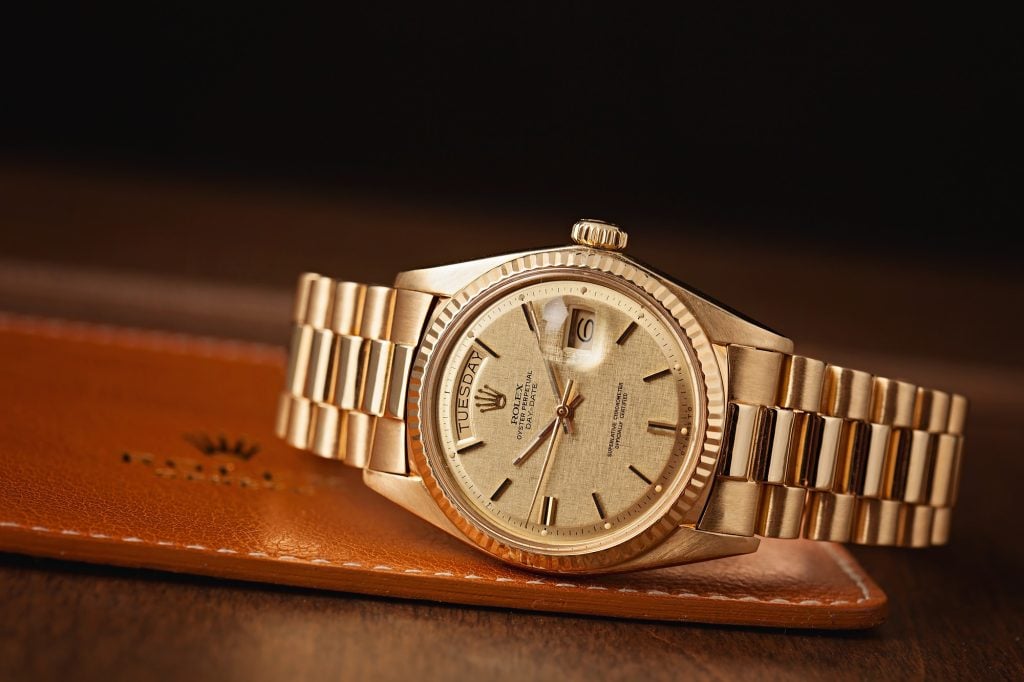
Rolex Presidential Day-Date ref. 1803 Price
As a gold Rolex, the Day-Date ref. 1803 often requires a serious investment. Currently, ref. 1803 trades hands for between $10k and $13k, depending on the condition of the watch. Compare that price to a Rolex advertisement from the 1960s stating that the Day-Date retailed for $1k. It’s safe to say that the Day-Date ref. 1803 has held its value incredibly well through the years and has much more room to appreciate during the next lifetime.
For even further comparison, its successor, ref. 18038 typically resells for around $15k, while ref. 18238 commands between $18k and $19k on the secondary market. The current-model yellow gold Day-Date 36 ref. 128238 retails for $33,950 and resells for around the same price. If you’re in the market for your first Day-Date, the vintage ref. 1803 is a reasonable prospect that should hold its value well.
The Rolex Day-Date 1803 is the quintessential vintage example of the brand’s flagship watch. While it was not the very first Day-Date model, the reference 1803 is often the first model that comes to mind when someone thinks of a vintage gold Rolex, and as it was the very last model to feature an acrylic crystal, a pie-pan dial, and a non-quickset movement, it offers an inherently retro appeal that simply doesn’t exist on modern watches.




